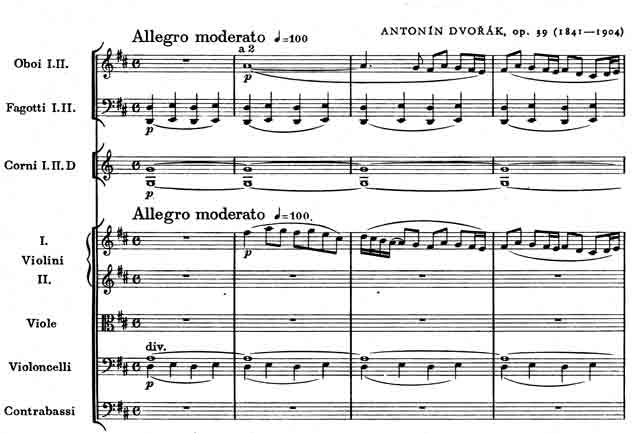The Czech Suite was one of several works Dvořák composed for small orchestra between 1875 and 1879 (the others being his masterful string and wind serenades). While scored for a Mozart-sized orchestra (much smaller than his symphonies), it has the beauty, sweep and grandeur of Dvořák’s larger works.
The Suite is in five movements, several of which are based on Czech dance forms. A tranquil Pastorale opens this work, essentially a prelude based on a simple descending theme passed around various string and wind sections. Next come two specifically Czech dance movements — a Polka, featuring a rising graceful theme in the violins, with a lively trio; and then a country minuet (“Sousedská”), opening with a decisive statement from clarinets and bassoons.
A short lyrical romance follows, featuring upper winds (flutes, oboes, English horn) and charming wind and string dialogues.
The finale is based on a boisterous Czech dance form, the “Furiant” (also used by Dvořák in other instrumental works), full of drive, syncopation and rhythmic flourishes, and ending in a fiery dash.
Czech Suite
Op. 39
By Antonin Dvorak






